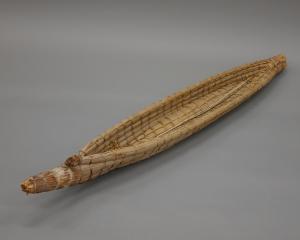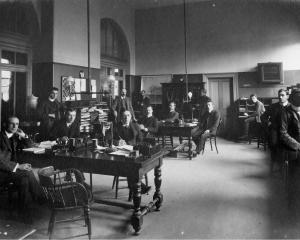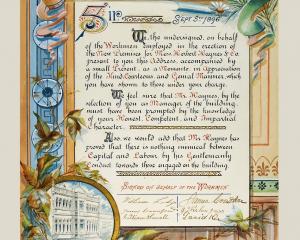

Many of these carvings are taonga puoro, or taoka pūoro in Kāi Tahu dialect, traditional Māori musical instruments, or in a more literal and poetic translation, singing treasures. Information with the exhibition describes how Māori musical instruments can be seen as families of the atua, the gods who brought them into being. Papatūānuku, the Earth Mother, whose heartbeats, the essence of rhythm, and melody ascend to Ranginui, the Sky Father, through their three most significant children of the singing treasures, Hine-Pū-te-Hue, Tāwhirimatea, and Hine Raukatauri.
Hine-Pū-te-Hue is the mother of hue, or gourds, who brought us the peaceful-sounding group of gourd instruments. Tāwhirimātea is the wind god, whose children have no body and therefore have mystical spirit voices. These instruments are spirit children, who emulate the sounds of the wind and share its esteem.
Last is Hine Raukatauri, the matriarch of the flute family. There are many types of traditional flute, but the one pictured is a pumotomoto: a birthing flute. This beautiful example is called Te Hekenga, and is from the Raukatauri family. It has just one tone hole towards the far end and with its simple musical design, the player is part of the instrument. It produces a beautiful, eerie melody and is both played and spoken through.
This taoka holds a special place within te ao Māori. Its use describes so much of what it holds dear.
It was played to babies from the womb until about 18 months old, when the fontanelle closes. The music it makes is ethereal; woodwind tones, calling the spiritual to the Earthly realm.
The pūmotomoto was played to the baby while the words of tradition were also chanted through it.
"Words of whakapapa genealogy stories, history, pūrākau, of māmā, pāpā and their ancestors, and the stories they have and hold ... it was played directly over māmā’s puku ... and during the time of labour this will be played as well to soothe the mother and the child, to ensure safe arrival," taoka pūoro practitioner, educator, and storyteller Koroheke Corey Robb says.
This implanted tribal lore into its newest members, binding them to their past, their land, their iwi, and whānau — telling the stories of the world they were born into and the people in whose arms they lay.
The pūmotomoto are only known through oral traditions as sadly no historical examples survive, and it was only in the 2000s some contemporary practitioners began creating them anew.
This pūmotomoto, Te Hekenga, tells some of the story of Māori instrumental music. The face of the instrument, with two noses carved around the lower end, represents the concept that this music is the combined breaths of player and instrument.
On the top side is part of the creation story. Tāne is depicted with two birds, kōtuku and hākuwai, who accompany him on his climb to the 12th heaven to obtain the kete mātauranga, the baskets of knowledge. Opposing them are the hordes of bats, namu (sandflies) and mosquitoes, sent by Whiro to stop him. The body of the flute is covered with carvings that depict the music flowing out into the world and creating pleasing shapes in the silence of the design.
Brian Flintoff’s works are housed in museums, galleries, and marae across Aotearoa New Zealand and the world. These intricate works of art radiate the talent and labour which made them.
"My attitude to carving is inspired by that of traditional artists, who strove for excellence in order to please the spirit world. Their understanding that harmony is the balance of spirit and physical elements has enriched my life and is the basis of my carving. The saying ‘plait the rope that binds the past to the future’ guides my desire to take inspiration from old art and present it in forms that retain their philosophy and essence and honour their ancestry, to enrich our living," artist Brian Flintoff says.
Ngā Hau Ngākau (This Breath of Mine) opened on Saturday with events and talks.












